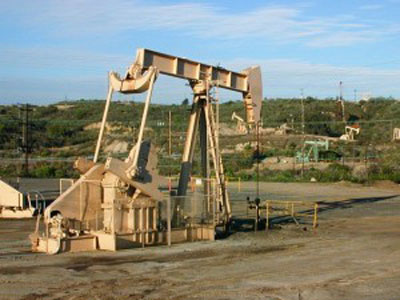Saudis may cut OSPs to lure Asian buyers
 SINGAPORE: Top exporter Saudi Arabia is unlikely to cut crude prices deeply enough in August to lure Asian refiners into buying much more oil, a Reuters poll showed on Friday, making it difficult for the kingdom to substantially boost supply.
SINGAPORE: Top exporter Saudi Arabia is unlikely to cut crude prices deeply enough in August to lure Asian refiners into buying much more oil, a Reuters poll showed on Friday, making it difficult for the kingdom to substantially boost supply.
Saudi oil minister Ali al-Naimi last month pledged to meet rising demand in the third quarter after OPEC failed to sanction a collective output increase.
The kingdom was expected to have pumped close to 10 million barrels per day (bpd) in June, industry sources said, over 1 million bpd more than in May.
Most of the incremental barrels would head east to meet fast-growing Asian demand, but plentiful supply in the region has made it difficult for Saudi Arabia to sell more. To do so, the kingdom needs to undercut competitors.
But any reduction in Saudi Arabia's August official selling prices (OSPs) would likely be too small to trump competing grades in Asia, the poll showed, including Russian ESPO crude piped from East Siberia to the Pacific Ocean.
"Our expectations are never satisfied, it's just day-dreaming," said a trader with a northeast Asian buyer of Saudi crude.
"They are asking all buyers to lift more, and if that is what they want, they have to lower the price.
They have to understand that there are competitors in the market. ESPO is oversupplied."
Traders are divided over whether the Saudis will make the unusual move of offering steeper discounts to Asian refiners to sell more and cool down global energy costs, or simply track routine market fundamentals such as crack spreads for naphtha, gas oil and fuel oil for pricing purposes.
A backlog of Russian ESPO crude lingers in northeast Asia. This implies refiners will continue to show limited interest for additional barrels from Saudi Arabia.
"Our requirement for crude, no matter from Saudi Arabia or other OPEC members are normal," a trader with a Chinese trading house said. "I suppose the Saudis will keep offering more crude to buyers next month, but there won't be much change for the buying interests from Chinese buyers."
For flagship Arab Light to become more attractive than higher-quality Russian ESPO, the OSP of the Saudi grade would have to drop to about parity with the average of Oman/Dubai quotes in August from a premium of $1.45 a barrel in July, a refinery trading source said, taking into account recent ESPO deals at premiums of $3.50-$3.75 a barrel to Dubai.
But the Reuters poll of seven traders showed $1 as the maximum expected drop for Arab Light, and one participant even forecast an increase of 5 cents, signaling little chance that Saudi Arabia will undercut Russia in Asia.
"I don't think the Saudis are in the business of subsidising refineries in the East," a trader with a western trading firm said. "The refinery margin in the East is pretty good."
So far, the Saudis have not let up efforts to sell more oil in the region as they ramp up output to near 10 million bpd for the first time since 2008, coinciding with the International Energy Agency's release of 60 million barrels of oil from emergency stockpiles.
"The IEA release will put some additional pressure on OSPs, but they were already under pressure anyway from the Saudis offering more to Asia," said a trader with a European trading firm. "With most of the Asian stock release constituting sour crude, the Dubai complex will remain weak."
Regional benchmark Dubai crude for prompt delivery is now trading at a discount to supplies further in the future, a market structure that denotes ample supplies and is known as contango, compared to backwardation a month ago, where prompt cargoes command a premium
The profit for processing crude into middle distillates such as diesel in Asia has fallen from a premium above $20 a barrel to Dubai crude at the start of May to about $17-$18.
"Spot cargoes of Middle East crude almost all fell this month compared with last month," a trader with a major oil refiner said
But Arab Heavy may get support from the fuel oil market, after the margin for making the residual product touched its strongest level in ten months earlier this week.
Most participants in the Reuters poll expect the Arab Heavy OSP to remain steady or increase.
Saudi crude OSPs are usually released around the fifth of each month, and set the trend for Iranian, Kuwaiti and Iraqi prices, affecting around 8 million barrels per day (bpd) of crude bound for Asia.
State oil giant Saudi Aramco sets its crude prices based on recommendations from customers and after calculating the change in the value of its oil over the past months based on yields and product prices.
Copyright Reuters, 2011























Comments
Comments are closed.